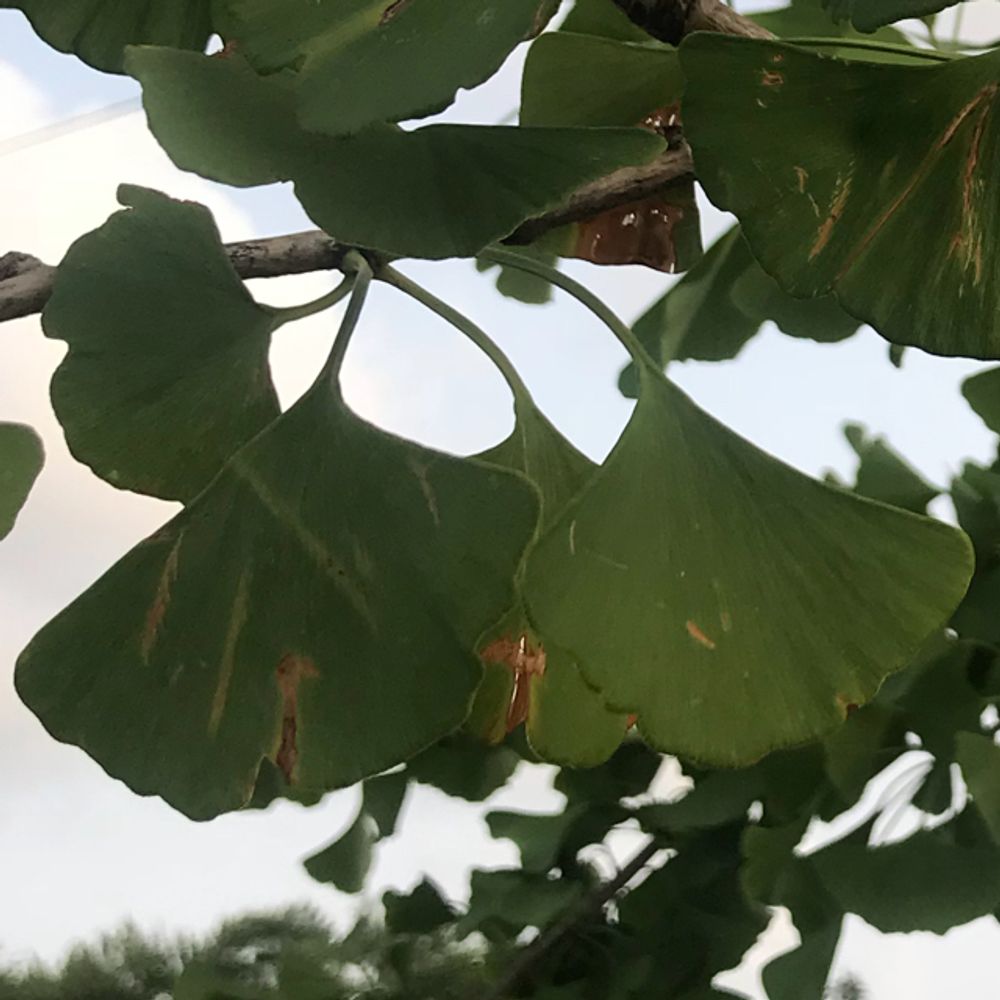Ginkgo
(Ginkgo)

Description
Ginkgo is a genus of highly unusual non-flowering plants. The scientific name is also used as the English name. The order to which it belongs, Ginkgoales, first appeared in the Permian, 270 million years ago, possibly derived from "seed ferns" of the order Peltaspermales. The rate of evolution within the genus has been slow, and almost all its species had become extinct by the end of the Pliocene; the exception is the sole living species, Ginkgo biloba, which is only found in the wild in China, but is cultivated across the world. The relationships between ginkgos and other groups of plants are not fully resolved. The Ginkgo is a medium to large tree that reaches 20–35m tall, although some specimens in China are over 50m tall. Ginkgo trees often have angular crown and long, somewhat erratic branches. They are usually deep rooted and resistant to wind and snow damage. Young trees are often tall and slender, and sparsely branched, and the crown becomes broader as the tree ages. Some old Ginkgos produce aerial roots, known as chichi (Japanese; "nipples") or zhong-ru (Chinese), which form on the undersides of large branches and grow downwards. Chichi growth is very slow, and may take hundreds of years to occur. The function, if any, of these thick aerial roots is unknown. Ginkgo branches grow in length by growth of shoots with regularly spaced leaves. From the axils of these leaves, "spur shoots" (also known as short shoots) develop on second-year growth. Short shoots have very short internodes (so that several years' growth may only extend them by a centimeter or two) and their leaves are ordinarily unlobed. They are short and knobby, and are arranged regularly on the branches except on first-year growth. Because of the short internodes, leaves appear to be clustered at the tips of short shoots, and reproductive structures are formed only on them. The leaves are unique among seed plants, being fanshaped with veins radiating out into the leaf blade, sometimes bifurcating (splitting), but never anastomosing to form a network. Two veins enter the leaf blade at the base and fork repeatedy in two. This is known as dichotomous venation. The leaves are 5-10 cm (rarely to 15 cm) long. The old popular name "Maidenhair tree" is because the leaves resemble some of the pinnae of the Maidenhair fern Adiantum capillus-veneris. Leaves of long shoots are usually notched or lobed, but only from the outer surface between the veins. They are borne both on the more rapidly growing branch tips, where they are alternate and spaced out, and also on the short, stubby spur shoots, where they are clustered at the tips. During summer, the leaves are a deep green, turning to brilliant yellow in the fall. They generally remain yellow for a time, then suddenly drop most of their leaves in what can seem like overnight.
Taxonomic tree:







